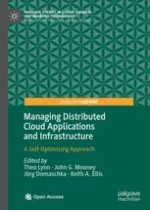The emergence of the Internet of Things (IoT), combined with greater heterogeneity not only online in cloud computing architectures but across the cloud-to-edge continuum, is introducing new challenges for managing applications and infrastructure across this continuum. The scale and complexity is simply so complex that it is no longer realistic for IT teams to manually foresee the potential issues and manage the dynamism and dependencies across an increasing inter-dependent chain of service provision.
This Open Access Pivot explores these challenges and offers a solution for the intelligent and reliable management of physical infrastructure and the optimal placement of applications for the provision of services on distributed clouds. This book provides a conceptual reference model for reliable capacity provisioning for distributed clouds and discusses how data analytics and machine learning, application and infrastructure optimization, and simulation can deliver quality of service requirements cost-efficiently in this complex feature space. These are illustrated through a series of case studies in cloud computing, telecommunications, big data analytics, and smart cities.
